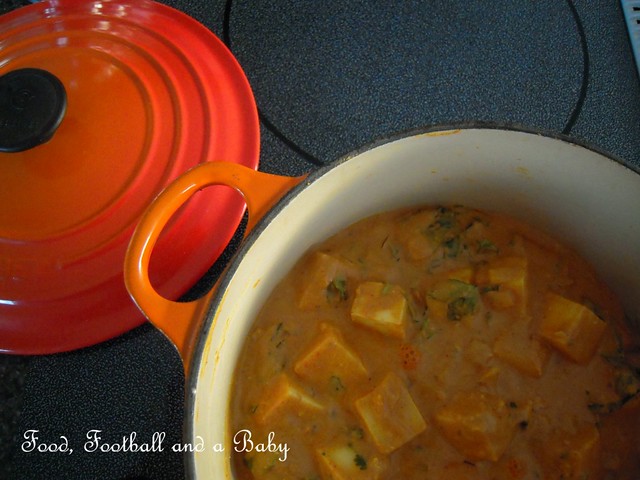I actually feel a bit funny when I use the word 'balti' to describe food. Because, in India, balti means bucket and no cook would ever serve anything in a bucket :-) However, so-called 'balti cooking' is famous in the UK, where balti is taken to refer to a 'karahi' or 'kadai' a wok like serving dish, in which the food is actually cooked.
Leaving aside the bucket debates and Birmingham's decision to patent the 'balti', I first tasted this style of cooking in Southall in London. I loved its unique flavours, as its a cross between tangy and spicy, creamy yet light! Balti dishes are also surprisingly quick to cook. For example, this dish took me all of 20 minutes, from start to finish, which makes it ideal for a weekday supper. Mine is not a fully authentic recipe, but still tastes fresh and lovely.
Paneer is full of protein, which is an added bonus. And you can toss in vegetables like green peppers or peas to make this dish more substantial, if you wish. Its versatile in that you can replace paneer with cooked chicken or prawns for a non-vegetarian dinner party or everyday dish. This dish freezes well, just defrost then microwave for a quick lunch or supper. Its best served with rice, rotis or chapathis.
Recipe:
(Printable recipe)
1/2 cup (250 ml) plain yoghurt
1 and half tbsp tomato paste
1/2 tsp chilli powder (increase for added spiciness)
2 garlic flakes, crushed
1/2 inch ginger, grated to a paste
1 tbsp ground coriander
2 tsp garam masala
2 tsp amchur (dried mango powder)
1/2 tsp ground turmeric
1 and half tsp salt or to taste
1 small onion, diced fine
1 tbsp vegetable oil plus a little more to fry the paneer in (use ghee if you're not counting calories)
1 tsp cumin seeds
Around 400g paneer, cubed
Around 1/4 cup single cream or half and half (125 ml)
Handful chopped fresh coriander
In a bowl, whisk together the yoghurt, tomato paste, ginger and garlic paste, chilli powder, garam masala, ground coriander, amchur and 1 tsp of the salt. Taste, and add more salt if you think it needs it. Or reserve the salt till the dish is cooked.
In a pan, heat the oil, then toss in the cumin seeds. Fry for 10 seconds, then add the onion and fry till onion turns light brown, around 5 - 6 minutes. Add the yoghurt mixture to the pan, and cook, stirring for rougly 3 - 4 minutes.
In a frying pan, add a little more oil and shallow fry the paneer until the cubes are golden (you can skip this step, if you wish, but if you're making the dish to freeze or a special ocasion, then its advisable to fry the paneer first).
Add the paneer to the sauce, and stir very gently until the cubes are coated with the sauce. Drizzle in the cream, gently stirring it in. Taste and adjust seasoning to your taste. Heat until the sauce is just beginning to bubble, then take off the heat and garnish with the fresh coriander.











Looks awesome ..... Don't normally eat too much paneer, but have to make amends.
ReplyDeleteI too don't like using the word balti. Stupid when you think of it. Anyway, your dish looks good, especially the sauce.
ReplyDeleteGreat sounding Paneer, and good history lesson, learn something new everyday.
ReplyDelete"1 tbsp vegetable oil plus a little more to fry the paneer in (use ghee if you're not counting calories)"
ReplyDeleteA tablespoon of fat is a tablespoon of fat when it comes to calories, it is things like cholesterol and saturated fats that would differ. And ghee just tastes so much better.
BTW, loving your blog.